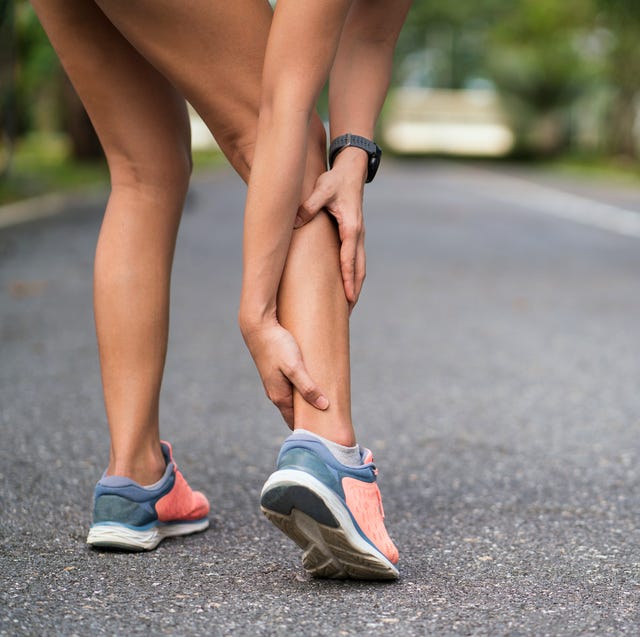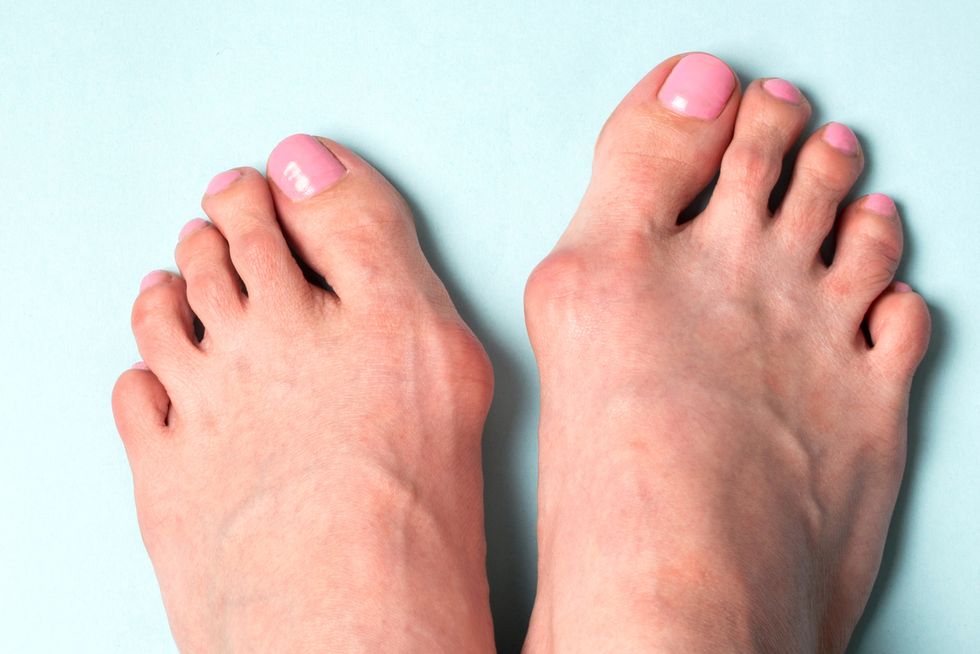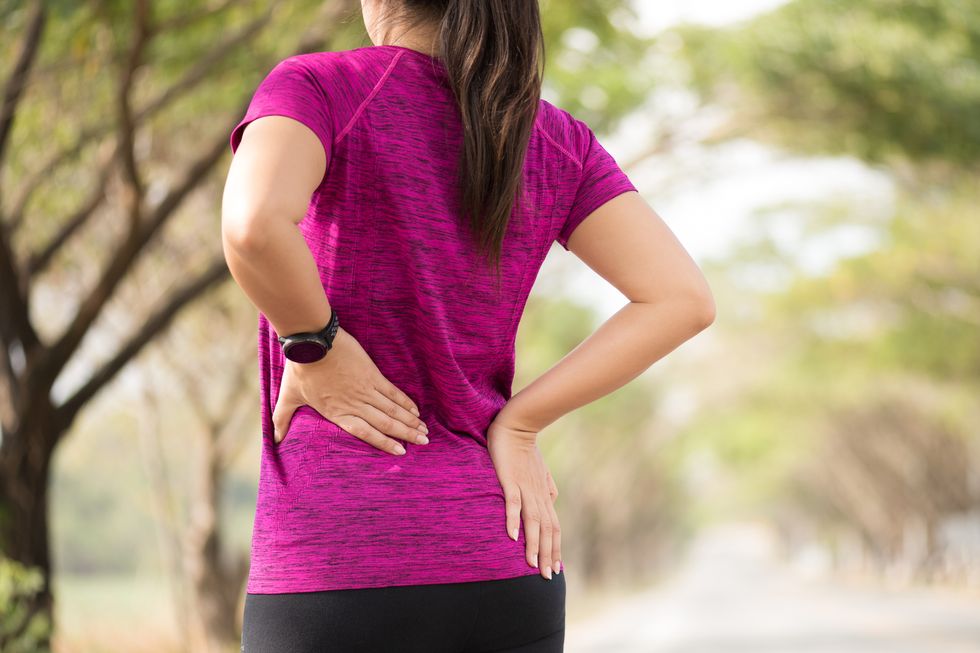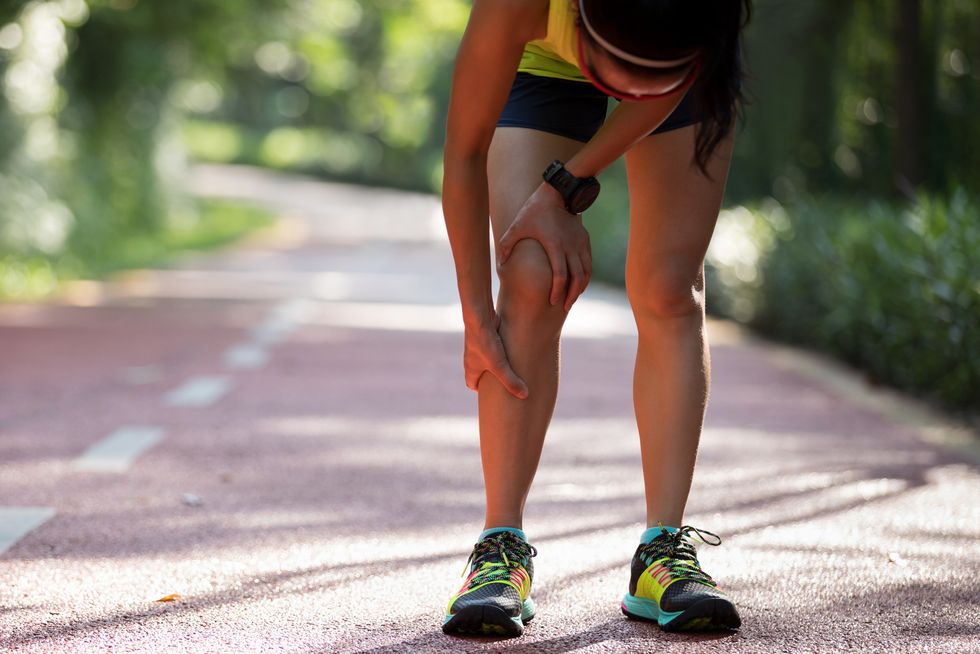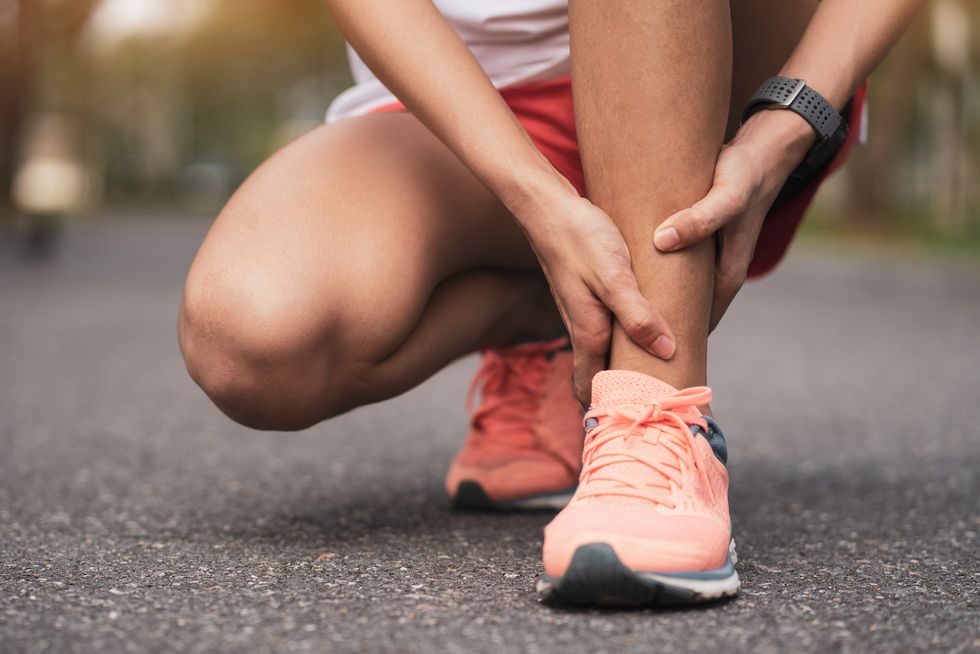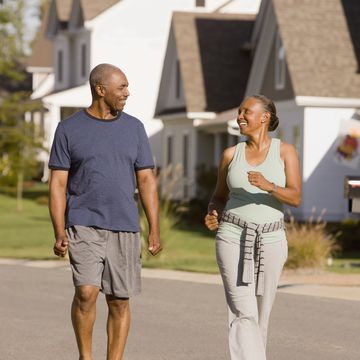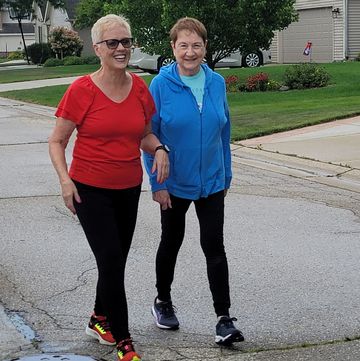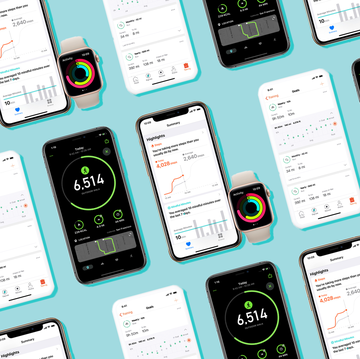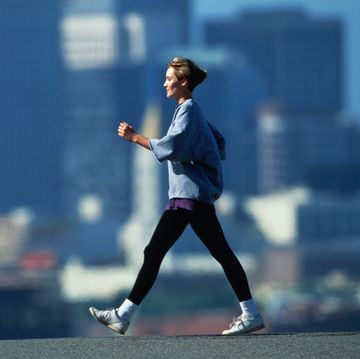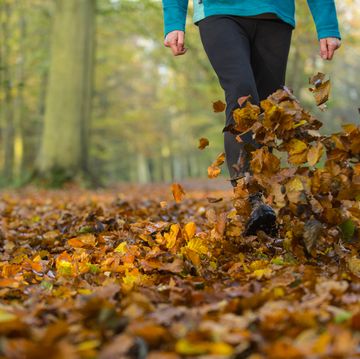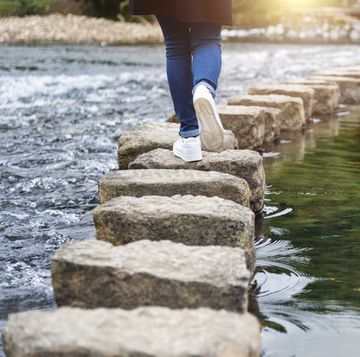We all know that walking is one of the safest, easiest forms of exercise, so why should you bother reading up on the risks?
When left ignored, an innocent foot pain or leg pain can become a chronic problem. Even the smartest walkers can be hobbled as a result of a walking-induced pain or a nagging old exercise injury that walking has aggravated.
As bothersome as the initial problem can be, the real damage is what happens next. You stop exercising, misplace your motivation, and lose muscle tone. To make sure a debilitating walking injury doesn’t prevent you from reaching your fitness goals, we asked leading experts for advice on how to avoid aches and treat the most common walking pains.
Once you solve your walking worries, get back to it and join us for our free Walk for Wellness virtual 5k on Saturday, October 7, 2023. Design your perfect walking experience and walk any time, anywhere. Register here, and email virtualwalk@hearst.com with any questions.
1. Plantar fasciitis
What it feels like: Tenderness on your heel or bottom of foot
What it is: The plantar fascia is the band of tissue that runs from your heel bone to the ball of your foot. When this dual-purpose shock absorber and arch support is strained, small tears develop and the tissue stiffens as a protective response, causing foot pain.
“Walkers can overwork the area when pounding the pavement, especially when you wear hard shoes on concrete, because there’s very little give as the foot lands,” says Teresa Schuemann, a board-certified physical therapist at Proaxis Therapy in Fort Collins, CO.
Inflammation can also result from any abrupt change or increase in your normal walking routine. People with high arches or who walk on the insides of their feet (known as pronating) are particularly susceptible. You know you have plantar fasciitis if you feel pain in your heel or arch first thing in the morning, because the fascia stiffens during the night. If the problem is left untreated, it can cause a buildup of calcium, which may create a painful, bony growth around the heel known as a heel spur.
✔️ What to do about it: At the first sign of stiffness in the bottom of your foot, loosen up the tissue by doing this stretch: Sit with the ankle of your injured foot across the opposite thigh. Pull your toes toward your shin with your hand until you feel a stretch in arch. Run your opposite hand along the sole of your foot; you should feel a taut band of tissue. Do 10 stretches, holding each for 10 seconds. Then stand and massage your foot by rolling it on a golf ball or full water bottle.
To reduce pain, wear supportive shoes or sandals with a contoured footbed at all times. Choose walking shoes that are not too flexible in the middle. “They should be bendable at the ball but provide stiffness and support at the arch,” says Melinda Reiner, D.P.M., a podiatrist in Syracuse, NY and former vice president of the American Association for Women Podiatrists.
Off-the-shelf orthotic insoles (by Dr. Scholl’s or Vionic, for example) or a custom-made pair can help absorb some of the impact of walking, especially on hard surfaces. Until you can walk pain-free, stick to flat, stable, giving paths (such as a level dirt road) and avoid pavement, sand, and uneven ground that might cause too much flexing at the arch, says Phillip Ward, D.P.M., a podiatrist in Pinehurst, NC. If your plantar fasciitis worsens, ask a podiatrist to prescribe a night splint to stabilize your foot in a slightly flexed position, which will counteract tightening while you sleep.
2. Ingrown toenail
What it feels like: Soreness or swelling on the sides of your toes
What it is: Toe pain can develop when the corners or sides of your toenails grow sideways rather than forward, putting pressure on surrounding soft tissues and even growing into the skin. You may be more likely to develop ingrown toenails if your shoes are too short or too tight, which causes repeated trauma to the toe as you walk, says Dr. Ward. If the excess pressure goes on too long, such as during a long hike or charity walk, bleeding could occur under the nail and—sorry, ick!—your toenail might eventually fall off.
✔️ What to do about it: Leave wiggle room in your shoes. You may need to go up a half size when you buy sneakers, because your feet tend to swell during exercise. Use toenail clippers (not fingernail clippers or scissors) to cut straight across instead of rounding the corners when you give yourself a pedicure.
“People who overpronate when they walk can exacerbate existing problems in the big toes,” says Dr. Ward, who suggests using inserts to reduce pronation (walking on the insides of your feet). If you have diabetes or any circulatory disorder, have your ingrown toenails treated by a podiatrist.
3. Bunion
What it feels like: Pain on the side of your big toe
What it is: A bunion develops when the bones in the joint on the outer side of the big or little toe become misaligned, forming a painful swelling. Walkers with flat feet, low arches, or arthritis may be more apt to develop bunions.
✔️ What to do about it: “Wear shoes that are wider—especially in the toe box,” says Dr. Ward. If you don’t want to shell out for new shoes, ask your shoe repair guy to stretch the old ones. Cushioning the bunion with OTC pads can provide relief, and icing it for 20 minutes after walking will numb the area. Ultrasound or other physical therapy treatments may reduce the inflammation. Severe cases can require surgery to remove the bony protrusion and realign the toe joint.
4. Achilles tendinitis
What it feels like: Pain in the back of your heel and lower calf
What it is: The Achilles tendon, which connects your calf muscle to your heel, can be irritated by walking too much, especially if you don’t build up to it. Repeated flexing of the foot when walking up and down steep hills or on uneven terrain can also strain the tendon, triggering lower leg pain.
✔️ What to do about it: For mild cases, reduce your mileage or substitute non-weight-bearing activities such as swimming or upper-body strength training, so long as these don’t aggravate the pain.
“Avoid walking uphill, because this increases the stretch on the tendon, irritating it and making it weaker,” says Dr. Schuemann. Regular calf stretches may also help prevent Achilles tendinitis, says Michael J. Mueller, P.T., Ph.D., a professor of physical therapy at Washington University School of Medicine in St. Louis. In severe cases, limit or stop walking and place cold packs on the injured area for 15 to 20 minutes, up to 3 to 4 times a day, to reduce inflammation and pain. When you return to walking, stick to flat surfaces to keep your foot in a neutral position, and gradually increase your distance and intensity.
5. Lumbar strain
What it feels like: Ache in your mid to lower back
What it is: Walking doesn’t usually cause lower-back pain, but the repetitive movement can make an existing lower-back injury worse. It’s easy to “throw out your back” when tendons and ligaments around the spine are overworked. Arthritis or inflammation of surrounding nerves can also cause pain in this region.
✔️ What to do about it: For general back pain prevention, keep the muscles in your trunk strong. While you walk, engage your abs by pulling your belly button toward your spine as if you were trying to flatten your belly to zip up tight jeans.
“Avoid bending over at the waist, a tendency when you are walking fast or uphill,” says Dr. Schuemann. “Instead, keep your spine elongated and lean your whole body slightly forward from your ankles.”
A short pull exercise might also prevent slumping by realigning your posture. You can even do it while you walk! Simply cross your arms at wrists in front of your waist and raise arms as if you’re pulling a shirt up over your head. Grow taller as you reach up, then lower your arms, letting your shoulders drop into place. Tight hamstrings and hip flexors can also cause postural distortions that put pressure on the lower back, so be sure to keep those areas flexible, too.
6. Neuroma
What it feels like: Pain in the ball of your foot or between toes
What it is: If tissue surrounding a nerve near the base of the toes thickens, it can cause tingling, numbness, or pain that radiates to surrounding areas. It may feel as though you’re treading on a marble. This condition, known as Morton’s neuroma, frequently develops between the base of the third and fourth toes. It’s up to five times more common in women than men, possibly because women’s feet are structured differently and because women tend to wear narrow, high shoes or very flat ones. “If you have Morton’s neuroma, walking can irritate it,” says Dr. Ward.
✔️ What to do about it: Treatment varies from simply wearing roomier shoes to surgery, depending upon the severity of the neuroma. See a podiatrist at the first sign of foot pain, as this condition can worsen quickly. Make sure that your walking shoes have a spacious toe box. Limit your time spent hoofing it in heels, and if you must wear them, travel in comfy shoes like supportive ballet flats and then slip on the more stylish pair. OTC insoles or pads that relieve pressure and absorb shock may help, too.
7. Shin splints
What it feels like: Stiffness or soreness in your shins
What it is: Your shins have to bear up to six times your weight while you exercise, so foot-pounding activities like walking and running can cause problems for the muscles and surrounding tissues and create inflammation. The strain and leg pain results from strong calves pulling repeatedly on weaker muscles near the shin.
“Walkers who walk too much too soon, or too fast too soon, or who go up a lot of hills are susceptible to this injury because the foot has to flex more with each step, which overworks the shin muscles,” explains Frank Kelly, M.D., an orthopedic surgeon in Eatonton, GA. Spending too many hours walking on concrete can also lead to this sort of inflammation. Severe or pinpointed pain in the shin could also be a stress fracture of the tibia.
✔️ What to do about it: Cut back on your walking for three to eight weeks to give the tissues time to heal. “If it hurts to walk, avoid it,” says Joel Press, M.D., physiatrist-in-chief at the Hospital for Special Surgery in New York City and professor of rehabilitation medicine at Weill Cornell Medical College. You might need an anti-inflammatory medication, such as ibuprofen, or cold packs to reduce swelling and relieve pain. In the meantime, keep in shape by cross-training with low-impact exercises such as swimming or cycling. You should also strengthen the muscles in the front of the lower leg (anterior tibialis) to help prevent a recurrence.
Use this simple exercise: While standing, lift your toes toward the shins 20 times. Work up to three sets and, as you get stronger, lay a 2- or 3-pound ankle weight across your toes to add more resistance.
Once you’re ready to start walking again, choose a dirt path and walk for 20 minutes at a moderate pace. Increase distance or speed slightly each week. “If your shins start to feel sore, rest for a day or two, and when you exercise again, take it even more slowly,” says Byron Russell, P.T., Ph.D., director of the department of physical therapy at Midwestern University in Glendale, AZ.
8. Bursitis
What it feels like: Soreness on the outside of your hips
What it is: Although there are many potential causes of hip pain, it’s common for the fluid-filled sacs (bursae) that cushion the hip joint to become inflamed with repetitive stress. People with one leg slightly longer than the other are more susceptible to this kind of hip pain. Too much walking without building up to it can also be a cause.
✔️ What to do about it: Instead of walking, ride a stationary bike, swim, or do some other non-weight-bearing activity for a few weeks, says Dr. Kelly, who also suggests an OTC anti-inflammatory medication to ease the discomfort. “When you begin walking again, don’t just step back in where you left off. Start gradually: Walk every other day at first. Spend the first 5 minutes warming up by walking slowly, and do the last 5 minutes at a slower, cool-down pace,” he says. In more severe cases, you may temporarily need a cane or crutches to reduce pressure.
9. Runner’s knee
What it like: Throbbing in front of your kneecap
What it is: Every time your shoe strikes the ground, your knee feels it. Eventually, your kneecap may start to rub against your femur (the bone that connects your knee to your hip), causing cartilage damage and tendinitis. Walkers with a misaligned kneecap, prior injury, weak or imbalanced thigh muscles, soft knee cartilage, or flat feet, or those who simply walk too much, are at greater risk of runner’s knee. The knee pain usually strikes when you’re walking downhill, doing knee bends, or sitting for a long stretch of time.
✔️ What to do about it: Shift to another type of exercise until the knee pain subsides, typically 8 to 12 weeks. Do some quad strengtheners to help align the kneecap and beef up support around your knee: Sit with your back against a wall, right leg bent with your foot flat on the floor and left your leg straight in front of you. Contract the quads and lift your left leg, keeping your foot flexed. Repeat 12 times; work up to three sets per leg. While standing, place a looped band around both feet and sidestep 12 to 15 times to right, then back to left. When walking or hiking downhill, take smaller steps and try not to bend your knees too much, or try walking sideways to give your side hip muscles a workout.
10. Stress fracture
What it feels like: Acute pain in your foot or lower leg
What it is: If you feel tenderness or pain when you press on a spot on your foot or lower leg, you may have a stress fracture—a tiny crack in a bone. Most common in the lower leg, they tend to occur when your leg muscles become overloaded from repetitive stress because the shock is absorbed by the bone, rather than the muscle. This can happen if you ignore a shin splint, for instance, because the continued strain on muscles and tissues will eventually shift to the bone.
Walking is more likely to lead to a stress fracture if you walk for too long without building up to it, especially if you have high arches or rigid, flat feet. Women may be more vulnerable because their lower muscle mass and bone density don’t always act as adequate shock absorbers.
✔️ What to do about it: Kick back and let your foot or leg pain heal for several weeks. “You need to get off your feet to avoid loading the bones,” says Sheila Dugan, M.D., physiatrist and interim Chair in the department of physical medicine and rehabilitation at Rush Medical College. Replace walking with swimming, water aerobics, or upper-body weight training.
When you return to your regular regimen, stop before you feel discomfort. “If you walk 1 mile and have symptoms again, slow down and start walking a quarter mile and take several weeks to build up to the longer distance,” says Russell.
Replace your walking shoes when the interior cushioning has worn down, to ensure that you have adequate shock absorption. To optimize bone health, do lower-body strength-training twice a week and eat calcium-rich foods like yogurt and cheese and greens such as kale, or take a supplement if your doctor feels you need one. You should aim for 1,000 mg of calcium a day (1,200 mg if you’re 51 or older).
